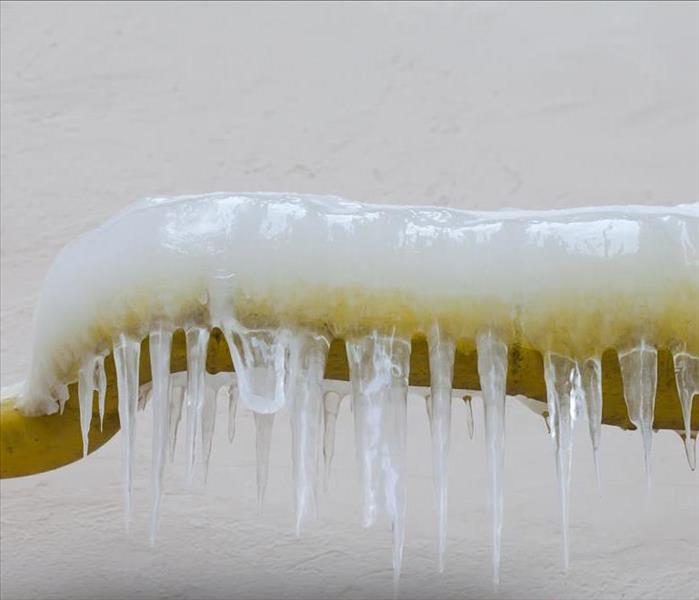Six Tips to Prevent Pipes in Your Home From Freezing
1/23/2022 (Permalink)
Popsicles and snowmen should be frozen. Ice cubes and glaciers should be frozen. Your home’s pipes should definitely not be frozen. Unfortunately, it can happen more often than anyone would like. Frigid winter temperatures affect more than just the great outdoors and if not properly protected, frozen pipes could cause a water disaster. Take a look at some ways to prevent a pipe freeze in Glendale Heights, IL.
Six Ways to Prevent Frozen Pipes
1. Warm up the rooms where water pipes are located
2. Open cabinet doors to allow heat to reach the pipes
3. Repair any cracks and holes that are open to the outdoors
4. Apply additional insulation around pipes
5. Use heating tape on faucets and pipes located outdoors or in unheated areas
6. Leave a faucet running a small stream or rapid drip during cold snaps
The obvious enemy to the formation of ice is heat. Keeping your home warm, even when you are away on vacation is vital to preventing pipe freeze. Just take care not to use space heaters in unoccupied areas. Allow your home to maintain a temperature of at least 60º at all times when a dip in the temperature is expected. Leave interior doors throughout your home open to allow warm air to circulate and leave cabinet doors open beneath sinks.
Filling in any holes, gaps, or cracks where frigid air comes through, can quickly drop the temperature and tempt problems. Insulating can prevent a pipe burst and is easy to do using split foam tubing made for the task. Heat tape can really help with pipes that are outdoors or in cold basements. Allowing an indoor faucet to dribble will help keep pipes open as well.
In the event you experience frozen pipes, a water damage repair specialist in Glendale Heights, IL, can help you reclaim your home and remediate any destruction water causes to your home's content or structure. But an ounce of prevention is still the best way to ensure that you won’t have to deal with any destructive results of cold weather.



 24/7 Emergency Service
24/7 Emergency Service
